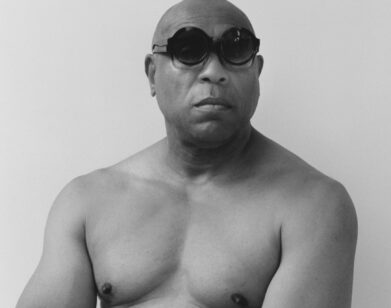Gillian Wearing

Much has been made of the way in which Gillian Wearing’s work anticipated social media. A renowned artist who was aligned with the YBAs in the ’90s, but whose work was more socially directed, the 48-year-old Wearing makes portraits through fragmentary imagery and texts that test the emancipatory potential of public address. Her 1992-93 photo series Signs That Say What You Want Them to Say and Not Signs That Say What Someone Else Wants You to Say involved passersby on the street who were given a piece of paper and a marker and asked to write what was on their mind. The messages were off-hand and funny, but every so often, a chasm opened up: “I signed on and they would give me nothing,” for instance, or “Help!” “In the early ’90s, there wasn’t the variety of social media that there is today for people to have a voice,” explains Wearing, who works out of a studio in Bethnal Green. “And the media would only portray certain people. It’s important to understand that who is portrayed has an effect on how we think the world is.” What Wearing found were people eager to speak—and evidently grappling with the possibility of authentic speech, even before the relentless projection and personalized advertising of today’s social media sites. In many of her works, Wearing creates zones and contexts that might offer expression and release. A video, Dancing in Peckham (1994), which was a centerpiece of her retrospective this past spring at London’s Whitechapel Gallery, records the artist dancing in a shopping mall to music in her head.
A powerful aspect of Wearing’s revelations is that they require a human presence. In 2 Into 1 (1997), a pair of twins and their mother mouth works dubbed by each other. The mother speaks of her admiration for her children, but also of the way they make her feel like a failure. The children speak of their mother’s tenderness but also the various ways she disappoints them. We never know how Wearing coaxes her subjects into saying what they do, and, after all, they might be actors. But the effect on the viewer is to create a craving for the authentic experience. For the past decade, Wearing has been making her own self-portraits, wearing naturalistic silicon masks featuring the faces of other people. “I have to act with my eyes, since they are the only parts of me visible, and each persona I capture needs a different approach,” she explains. Likewise, her selections’ subjects-members of her family, Claude Cahun, August Sander, Andy Warhol, and even herself at age 17-speak to the agony and ecstasy of self-presentation.
PHOTO: GILLIAN WEARING IN LONDON, OCTOBER 2012. TANK TOP: SALVATORE FERRAGAMO.






